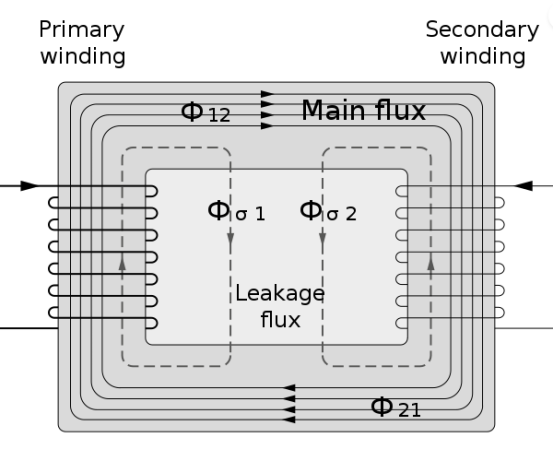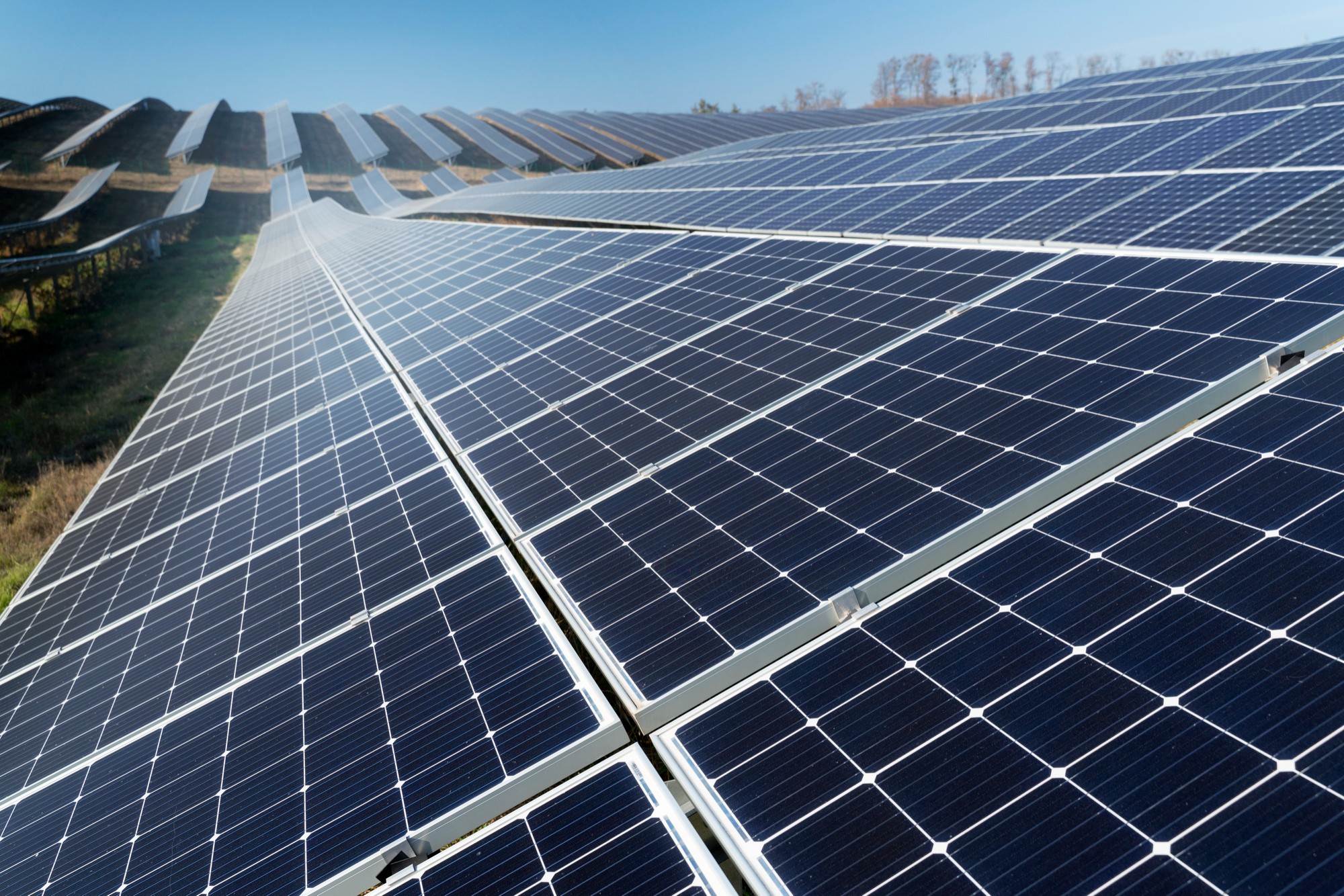I. Brief explanation of a power transformer
A power transformer is an electrical device used to convert a certain value of alternating voltage (current) into another or several different values of voltage (current) with the same frequency. Since its invention in the 19th century, transformers have become one of the most basic and important devices in power systems and are widely used in transmission and distribution systems. The basic principle of a transformer is electromagnetic induction, whether it is a single-phase or three-phase power transformer, they all have primary and secondary windings on the iron core column that forms the magnetic circuit. Now, taking a single-phase dual winding (or one phase of three-phase) transformer as an example, it is composed of two windings and a core.

Figure 1: Schematic Diagram of Power Transformer Working Principle
II.Importance in power transmission
In the transmission of electrical energy, power transformers play a crucial role. They can first realize the step-up and step-down of voltage, enabling electrical energy to be transmitted and utilized according to different needs. When it is necessary to transmit electrical energy over long distances, the current on the line can be reduced by stepping up the voltage, thereby reducing the loss of the conductor. Conversely, when it is necessary to deliver electrical energy to places where users require low voltage, the high voltage on the transmission line can be stepped down to an appropriate level through the transformer. This not only ensures the efficient transmission of electrical energy but also guarantees the safety of users’ electricity usage.
In addition, power transformers can also play a role in isolating and protecting circuits. The windings of the transformer are coupled through a magnetic field, achieving isolation of the input and output circuits, which can prevent the transmission of faults in the power system and improve the safety of the circuit. At the same time, the transformer can also provide protection for short-circuit currents and overload currents. When a short circuit or overload occurs in the circuit, the transformer will automatically cut off the circuit to ensure the safe operation of the equipment.
Moreover, power transformers can also achieve power matching and regulation. In general, the AC voltage of the transmitted electrical energy and the voltage required by the load are inconsistent. The voltage of the transmitted electrical energy can be adapted to the voltage level required by the load through the transformer, thereby achieving power matching. At the same time, the transformer can also regulate the power, automatically adjust the output voltage of the transformer according to the change in the size of the load, to meet the needs of different loads.
Power transformers play a very important role in the transmission of electrical energy. They can achieve efficient transmission and reasonable distribution of electrical energy, improve the stability and safety of the power system. Through the use of transformers, electrical energy can better meet various different electricity needs, providing reliable power support for people’s lives and work. At the same time, the efficient operation of power transformers also plays a positive role in energy conservation and environmental protection. Therefore, power transformers have an irreplaceable position in modern power systems.
III. Step-Up Transformers in Power Generation
A. description of how step-up transformers work
The transformer that improves the output voltage by keeping the current stable without any changes is called a step-up transformer. This type of transformer is mainly used in transmission and power station applications. The step-up transformer includes two windings, such as primary and secondary windings. The number of turns in the primary winding is less compared to the secondary winding.
The construction diagram of the step-up transformer is as shown below, and its structure can be completed using an iron core and windings.

figure 2:Construction Diagram of Step-Up Transformer
B. Importance of high voltage in long-distance power transmission
Most of our daily life uses 220V AC, and some industrial electricity uses 380V voltage supply, both of which are low-voltage electricity. The high-voltage electricity we see on transmission lines that are tens of meters high in the field. Why use high-voltage electricity for long-distance power transmission?
In high school physics, we must have learned the power calculation formula P=UI, where P is power, U is voltage, and I is current. When the power is constant, the voltage is larger, the current is smaller. There is resistance in the wire. The larger the diameter of the wire, the smaller the resistance, but the diameter of the wire cannot be increased indefinitely, and the farther the distance, the greater the resistance in the wire. In the process of power transmission, a part will be converted into heat and consumed. According to Joule’s Law Q=IRt (Q is the heat generated by the consumption of electric energy, R is the resistance of the wire, t is time), the power loss on the transmission line is proportional to the square of the current. Therefore, large power transformers are used to increase the voltage and reduce the current during long-distance power transmission, which reduces the heat generation of the wire and can effectively reduce the loss of electric energy on the power transmission line.
So does this mean that the higher the voltage for power delivery, the better? Not necessarily. The higher the voltage, the stricter the material and overhead height of the wire, and the higher the cost. The high-voltage transmission line itself is bare wire and is not wrapped in an insulator. Because the voltage is too high, even if there is insulation skin, it will be punctured, and it will increase the weight of the wire and increase the cost.

figure 3 High Voltage Transmission Line
Read also: Solar Panel Batteries Are Revolutionising Energy
IV. Step-Down Transformers in Power Distribution
A. Detailed explanation of how step-down transformers work
A step-down transformer reduces the voltage applied to the primary winding and provides a reduced voltage on the secondary side. However, the power and frequency remain unchanged in this process. The construction of the step-down transformer lies in its core and windings, which is very similar to the step-up transformer. The working principle of the step-down transformer is the same as that of a typical transformer. The output voltage provided by the step-down transformer is higher than the input voltage of the input voltage and follows Faraday’s law and the turns ratio.

figure 4 Working Principle of Step-Down Transformer
B. The Importance of Low Voltage in Daily Life
The main function of a transformer is to transform voltage for the benefit of power transmission. After the voltage is stepped up by a step-up transformer, it can reduce line losses, improve the economy of power transmission, and achieve the purpose of long-distance power transmission. The step-down transformer can change high voltage into various levels of use voltage needed by users to meet their needs. The step-down transformer is a very important device in the power transmission and transformation system. Its normal operation is not only related to its own safety and reliable power supply for users, but also directly affects the stability of the power system.
V. The Impact of power Transformers on Power Efficiency
B. As an indispensable electrical equipment in modern times, power transformers have tremendous significance in our actual life. First of all, it reduces a lot of power loss, providing guarantees for the country’s economic development and social stability. Secondly, voltage transformers have provided many conveniences for our daily life. Everyone’s life is inseparable from electrical products, and voltage transformers have made a huge contribution to the convenience of our life.
Here are a few practical meanings of power transformers:
1. Reduce transmission loss: During long-distance power transmission, the power system needs to transmit high voltage over long distances. Because long-distance power transmission resistance will increase power losses, using a transformer to convert high voltage to low voltage reduces resistance, thereby greatly reducing transmission losses.
2. Meet power needs: Power transformers can adapt high-voltage electrical energy to low-voltage levels suitable for consumer use, meet the energy needs of various electrical equipment, and ensure the power supply for people’s life and production.
3. Maintain the stability of the power grid: In the power grid, when user demand changes or equipment fails, using a power transformer can adjust parameters such as voltage and current to maintain the stable operation of the power grid and ensure that it does not affect the normal life of others.
In summary, the practical significance of power transformers is very significant. It provides necessary support for the stable operation of the power system, and also makes the transmission of power more efficient, which can adapt to the power needs under various circumstances. It plays an indispensable role in benefiting the people and contributing to economic development.



